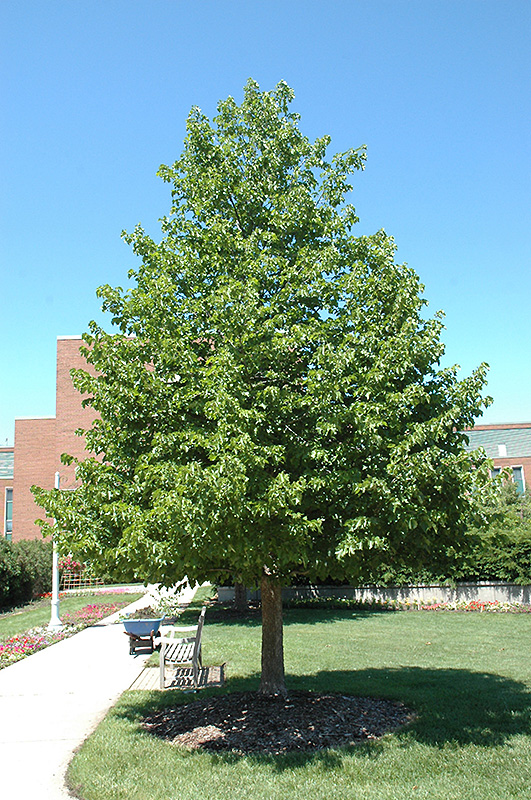Height: 45 feet Spread: 25 feet
Sunlight:
Hardiness Zone: 4b Other Names: Turkish Filbert, Turkish Hazelnut Description: A stately small tree with a formal pyramid shape, low maintenance, an excellent choice for home landscapes or boulevards; no one overwhelming ornamental feature but overall an excellent tree for landscape use Ornamental Features Filbert, Turkish is primarily valued in the landscape for its distinctively pyramidal habit of growth. It has dark green deciduous foliage. The crinkled round leaves turn yellow in fall. Landscape Attributes Filbert, Turkish is a deciduous tree with a distinctive and refined pyramidal form. Its average texture blends into the landscape, but can be balanced by one or two finer or coarser trees or shrubs for an effective composition. This is a relatively low maintenance tree, and is best pruned in late winter once the threat of extreme cold has passed. It is a good choice for attracting birds and squirrels to your yard. It has no significant negative characteristics. Filbert, Turkish is recommended for the following landscape applications; Planting & Growing Filbert, Turkish will grow to be about 45 feet tall at maturity, with a spread of 25 feet. It has a high canopy of foliage that sits well above the ground, and should not be planted underneath power lines. As it matures, the lower branches of this tree can be strategically removed to create a high enough canopy to support unobstructed human traffic underneath. It grows at a medium rate, and under ideal conditions can be expected to live for 70 years or more. This tree should only be grown in full sunlight. It prefers to grow in average to moist conditions, and shouldn't be allowed to dry out. This plant should be periodically fertilized throughout the active growing season with a specially-formulated acidic fertilizer. It is not particular as to soil type or pH. It is highly tolerant of urban pollution and will even thrive in inner city environments. This species is not originally from North America. Special Attributes The fruit on the Turkish Filberts don't generally fully develop due to lack of cross pollination.![]()
![]()
![]()
![]()
![]()
![]()
![]()
![]()


